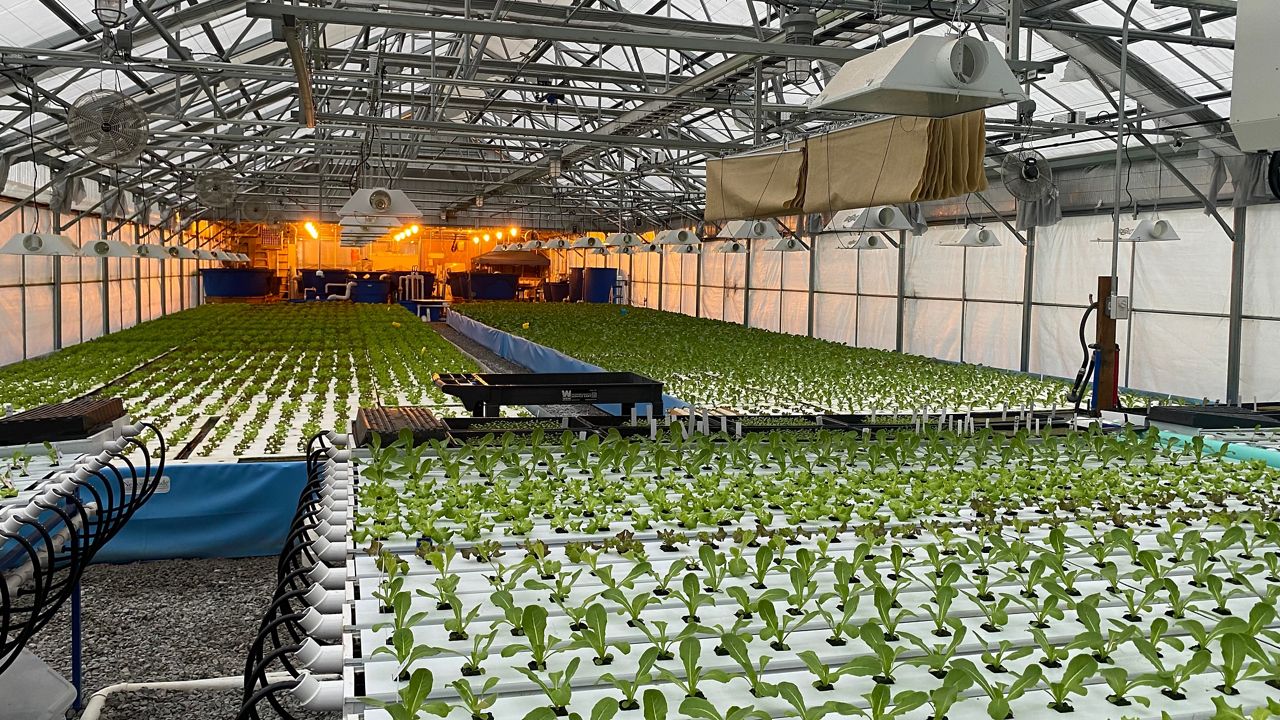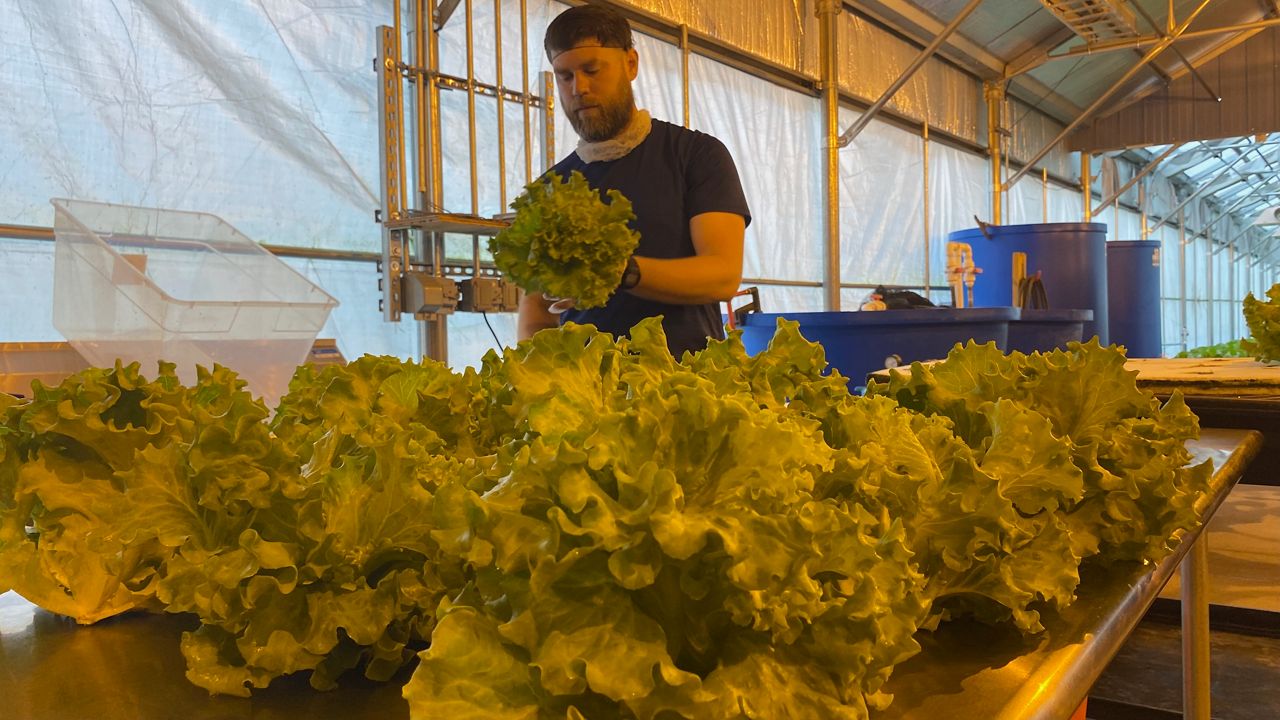SHELBYVILLE, Ky. — One Shelbyville farm is producing hundreds of lettuce heads a day without using any soil. Their secret? Fish.
What You Need To Know
- River City Aquaponics produces 288 lettuce heads a day
- They utilize aquaponics to produce leafy greens year round
- Aquaponics is a combination of fish and plant production using aquaculture and hydroponics systems
- There are now 11 aquaponics systems running in the state of Kentucky
River City Aquaponics is home to a 6,640 sq ft. greenhouse that produces tilapia and leafy greens all year round. Life at River City is always a big splash and part of why farm manager Chris Harris joined the team.
“I came across aquaponics kind of by chance. I was looking to get out of the field that I was in,” Harris said. “I was in property management for the better part of a decade and I wanted to do something that was interesting and fulfilling and I found it.”

Aquaponics is essentially putting fish to work, and it’s safe to say, River City has that covered. The greenhouse is filled with tanks that store nearly 3,000 fish.
According to USDA, aquaponics is a combination of fish and plant production using aquaculture and hydroponics systems.
“We provide our fertilizer and our nutrients with our fish,” Harris said. “So as we feed our fish and as a fish lives, they provide the nutrients we need, nitrogen in particular, the nitrates that really do a number on growing this lettuce very well.”
They’ve been producing 288 heads of lettuce a day. There’s also no soil involved in the entire process, eliminating any use of harmful pesticides.
“Daily maintenance and draining these clarifiers, we are able to separate solid waste from the main system so that fresh clean water will go downstream to the rafts where the lettuce actually sits,” Harris explained.
It’s a process that is quicker than some might think. Harris says from seed to harvest, it’s roughly 38 days depending on the growth level of the lettuce, with 10 of those days sitting in rafts in the water.
Ten years ago, there were only two farms running aquaponics systems in Kentucky. That number has since grown to 11.
“They are realizing there are a limited amount of resources and are figuring out better ways to conserve water or energy within systems,” Andrew Lohman, research associate with Kentucky State University in aquaponics said. “Within aquaponics systems, like I said, we can produce both fish and plants in the same system.”

Andrew Lohman, a research associate at Kentucky State University in aquaponics, says what attracts people to the process is knowing where your produce is coming from.
“Where your lettuce is coming from, where your other greens or other vegetables are coming from, is probably coming from very far away,” Lohman said. “You may not know what types of practices people are using in that.”
It’s a process that has Harris hooked and soon the rest of the state.
“It sounds cliche, but it’s the way of the future, again if you look at what you’re able to produce in such a small space compared to dirt farming and what you’re able to produce in such a large space and the amount of nutrients we can provide ourselves which cancels all of our need for fertilizers,” Harris said.




